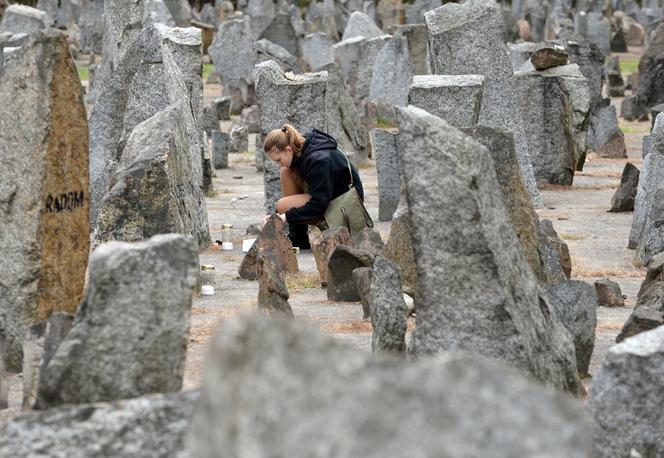


The atmosphere was solemn at the foot of the monument to the victims of the Treblinka II extermination camp, some 100 kilometers east of Warsaw, on Wednesday, August 2. A dozen public figures from Israel, Germany and Poland paid tribute to the prisoners who, 80 years earlier, had revolted to take control of the camp. Several hundred of them had set fire to the barracks before fleeing into the woods, evading the surveillance of the SS and guards. Most of them were caught, but a few dozen survived the Second World War. "Historians don't know whether 800,000 or 900,000 people perished here. How is it possible to be wrong by 100,000 human lives? (...) This is not a reproach to the historians, but it is a fact: We know neither the first names nor the surnames of these people," said Monika Krawczyk, director of the Jewish Historical Institute, a Warsaw-based institution dedicated to the history of Polish Jews.
Today, a pine forest surrounds the memorial site, which was built in 1964. Two concrete blocks symbolize the entrance to the camp, and 17,000 stones pay tribute to the victims, whose ashes lie beneath a layer of concrete. Constructed in the spring of 1942, two kilometers from a forced-labor camp set up by the Nazis, the Treblinka II extermination camp was one of the sites where Operation Reinhard was implemented: the Nazi's Final Solution on Polish soil, occupied by the Third Reich.
In the space of 13 months, the dozen-or-so gas chambers at Treblinka II wiped out most of the Jewish community in Warsaw and its surrounding towns, along with Roma and Jews from all over Europe. This was a "particularly efficient" killing machine, said historian Zachary Mazur, who's affiliated with POLIN, the Museum of the History of Polish Jews. "There were only 30 to 60 officers present on site and just over 100 Soviet prisoners of war, mainly Ukrainians. And it was the Jewish prisoners who were entrusted with the most abject tasks around the corpses."
At an almost daily rate, the trains arrived at a bypass track carrying between 6,000 to 8,000 people. "As the deportations increased, a series of techniques were developed to keep the new arrivals calm," said the historian. The hut next to the unloading ramp, for example, was painted to resemble a railway station, depicting an irremediably frozen clock. Passengers, lured by the prospect of "transportation to the East," were asked to leave all their belongings at the entrance. They were then taken to the gas chambers 80 meters away, under the pretext of a shower. Instead, they suffocated and died within minutes in the fumes of the diesel engines of former Soviet tanks.
You have 45.54% of this article left to read. The rest is for subscribers only.
